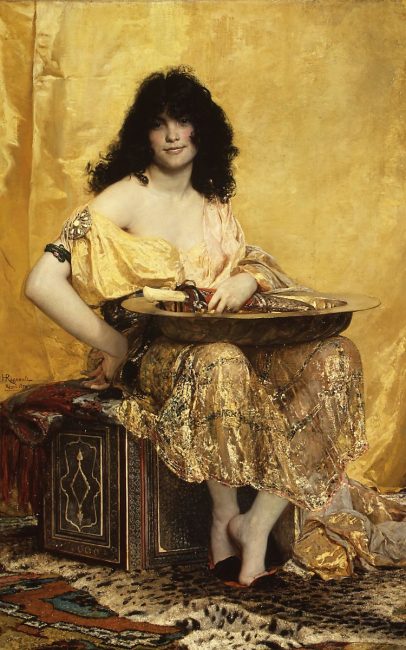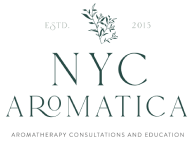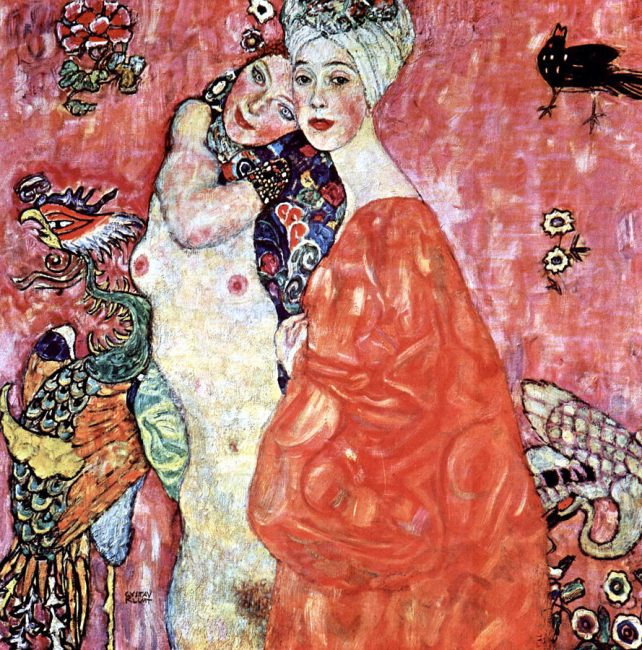Your cart is currently empty!

Oh Ylang ylang! Often times called “flower of flowers” and “poor man’s Jasmine” it is one of the few aromatic flowers that can be distilled to obtain an essential oil. Many floral “oils” of aromatherapy and natural perfumery are technically “absolutes”, which are traditionally solvent extracted. Why is this so? So many flowers such as Jasmine, Linden and Champaka are too delicate and ephemeral to withstand the harsh temperatures of steam or water distillation.
As Arctander notes, Ylang ylang essential oil obtained from the gorgeous flowers of the evergreen Cananga odorata tree may better be called “everybody’s ylang-ylang” rather than “poor man’s Jasmine”. Truely so, as plants are for everyone! If you could ask a plant, it would likely tell you that everyone is welcome to its medicine if they would benefit from it.
On that note (yes, the perfume pun is intended), Ylang ylang is a key botanical used in perfumery, notably Chanel No. 5, way back in the nascency of modern perfumery. It was a key ingredient of the popular Macassar oil of the Victorian era (see recipe below) and is still widely used in body and hair care products.
This flowering tree is native to the Indo-Malayan region of this wonderful Earth. It is here where Ylang ylang flowers are incorporated into a traditional preparation with Coconut oil called “borri-borri”, used to protect hair from sea salt and support skin health. As you may surmise, Ylang ylang is a go-to botanical for cosmetic applications and enhancing sensuality!
A Floral Sensuality
The tree blooms nearly year-round, kindly sharing its fragrant flowers which are hand-harvested by growers looking to obtain essential oil. Ylang ylang’s flowers release their sweet essence during the night attracting nocturnal moths, which are its main pollinators. This symbiotic-nocturnal relationship of reproduction gives metaphor to the incredibly sensual and sexual nature of the essential oil.
The flowers grow in clusters, evolving from a young green to a waxy yellow over a period of 15-20 days. If left alone, the flowers produce fleshy, olive-like berry clusters which are enjoyed by local fauna that help distribute the trees’ seeds.
A Portrait of Ylang Ylang Essential Oil
Ylang ylang (pronounced ē-ˌläŋ-ˈē-ˌläŋ) essential oil is distilled from the flowers of the fast-growing evergreen tree, Cananga odorata f. genuine, of the custard-apple family (Annonaceae). Originating in the Indo-Malayan region, the French brought the tree to the Reunion Islands, Comoros, and Madagascar where it is cultivated and distilled for its essential oil.
Of note: “Ylang ylang” essential oil is distilled from Cananga odorata f. odorata/f. genuina). Also on the market is “Canaga” oil, which is distilled from Cananga odorata f. macrophylla and characteristically less expensive than, more aromatically “green” and less floral and less subtle than “Ylang.” This is a fine example of why knowing how an essence smells, Latin binomials and country-of-origin is important when using essential oils.
Ylang ylang essential oil is an invitation for you to embody patience; to settle into a languid state of brilliant sensuality where you may confidently smile into the eyes of love–which in-turn reflect back your inherent beauty.
Aromatic Personality of Ylang ylang “Complete” Essential Oil
Ylang ylang complete imbues the air with creamy-vanilla molecules reminiscent of ephemeral spring aromas: hyacinth, narcissus and daffodil. A calm, warming presence floats in as the aromatic molecules coax you outward, luminously. Beaming.
The oil lingers as it dries down: lime green, light yellow, white, smooth, round but not contained, waxy, chalky and powdery. It gives you permission to walk into the space of confident radiance—allowing you to relax into your sensuality, not being bothered by the mundane. Ylang ylang is a confident smile: personified as a sexy someone who comfortably exudes an easeful joy.
Ylang ylang: Essential Oil Safety & Chemistry Highlights
• Safety Notes: Ylang ylang essential oil is thought to be a moderate sensitizer and is not recommended for hypersensitive, diseased, or damaged skin. Although the oil excels in skin and hair care, use prudence such as appropriate dilutions and delivery methods. Spot test and monitor usage for those with fragile skin.
• Chemistry Notes: Ylang ylang is a fractionated essential oil, meaning different fractions are removed based on distillation time and specific gravity—this is mainly favored by the perfume and cosmetics industries as first fractions are “sweeter” and “floral” namely due to their ester content. During the distillation process, the grades become richer in heavier compounds (sesquiterpenes) and contain less of the lighter, more volatile compounds (especially the esters, followed by aldehydes, alcohols, etc.). There are five fractions available: Extra Super, Extra, First, Second, and Third. According to Holmes, Ylang ylang “Complete” is a combination fractions 1-3, though I have seen conflicting information around which fractions are used (such as 1 & 2 as cited in Pitman’s Aromatherapy book). Of note, it is arbitrarily up to the distiller to determine when to “cut” (or stop) the collection of each fraction.
From an Aromatherapist’s perspective it is worth using the “Complete” fraction of the oil as you will be working with a majority of the whole distilled essence. Ylang ylang Complete is rich in sesquiterpenes (i.e., beta caryophyllene, Germacrene D), and strongly supported by esters (e.g., benzyl benzoate, farnesyle acetate). Note that all references of Ylang ylang in this article, unless otherwise noted, are of the “Complete” essential oil.
Affinities and Usage Applications for Ylang ylang Essential Oil
Ylang ylang essential is widely known for its affinity for skin and hair care and its euphoric effect on the mind; it also benefits the heart (hypotensive) and immunity. Following are situations where it shines:
| Affinity | Core Applications |
| Musculoskeletal & Circulatory | Hypertension, heart palpitations, muscle spasms. |
| Hair and skin. | Oily skin, sebum balancing, oily hair tonic, aging or stressed skin. Thought to stimulate the scalp. *Blend with several of the “floral” oils listed below to support skin health: Jasmine, Rose, Neroli and even “herby” florals like Lavender and Clary sage. |
| Immune enhancing | Antiseptic *Blend with Lavender (Spike), the Citrus oils and Cinnamon leaf; this would be lovely in a diffuser and sugar scrub! |
| Nervous/Psyche/Emotion: of note, its sensual nature. | Antidepressant, stress, agitation, insomnia, anxiety, relaxing yet uplifting, euphoric sensuality. *Blend Ginger and Cardamom with a dash of Cinnamon leaf for sensual and warmth, Spikenard adds a depth of grounding sensuality. Combine with other florals for enhanced sensuality, lovely for a body oil! |
| Sexual & Reproductive Support | Aphrodisiac, frigidity, impotence, PMS, amenorrhea, dysmenorrhea. *Blend with Clary sage and Geranium for a classic balancing oil. |
Blending with Ylang Ylang Essential Oil
Ylang ylang blends well with: Sweet orange (Citrus sinensis), Bergamot (Citrus bergamia), Mandarin (Citrus reticulata), Spikenard (Nardostachys jatamansi), Ginger (Zingiber officinale), Cardamom (Elettaria cardamomum), Cinnamon leaf (Cinnamomum zeylanicum), Nutmeg (Myristica fragrans), Lavender (Lavandula angustifolia, L. latifolia), Rose (Rosa damascena), Clary sage (Salvia sclarea), Geranium (Pelargonium graveolens), Jasmine (Jasminum sambac) and Neroli (Citrus aurantium var. amara).

Aromatherapy in Practice with Ylang Ylang Essential Oil
Kissable Soft Lip Balm
Aromatic, volatile oils are incredible allies for bridging the mind and body, psyche and soma. This is a perfect opportunity to add joy and romance to a nourishing lip balm for lusciously soft lips.
The floral essential oils in this blend where chosen for their affinity to the skin as well as their calming effect on the mind. Peppermint was chosen to add a slight tingling sensation and brightness and clarity to the blend.
What you need to create approximately 2 oz. (60ml or 12-15 tubes):
- Small, lidded bottle for essential oils
- Scale
- Double boiler
- Glass measuring cup (16 oz. works well)
- Stirrer (e.g., stainless steel spoon, glass stirring rods)
- Spatulas for working with base oils & butters
- Containers for weighing your ingredients
- Lip balm containers
- Paper towels
- Flat tray to hold the balm containers
- Labels
| Essential Oils and Carrier/Base Products | Purpose/Intention | Amount |
| Beeswax | Emulsifier, humectant, Rigidity | 12 g |
| Shea butter* (Vitellaria paradoxa) | Emollient, nourishing, solid @ room temperature | 15 g |
| Cocoa butter* (Theobroma cacao) | Emollient, nourishing, solid @ room temp | 9 g |
| Fixed oils** | Emollient, slip | 24 g |
| Neroli (Citrus aurantium var amara) essential oil | Cracked/inflamed skin, calming | 12 drops |
| Ylang ylang Complete (Canaga odorata Complete) essential oil | Stressed skin, calming | 7 drops |
| Geranium (Pelargonium graveolens) essential oil | Cracked/inflamed skin, balancing | 5 drops |
| Peppermint (Mentha x piperita) essential oil | Clearing, refreshing, tingle sensation | 5 drops |
| Rose otto (Rosa damascena) essential oil | Delicate skin, calming, cracked/inflamed skin | 3 drops |
*Note: I chose to use organic, deodorized butters as I want the volatile oil aromas to come through in the usage experience, not the fixed oil aromas.
**Note: Have fun and be creative when choosing fixed oils! My latest batch included Castor oil (Ricinus communis), a Linden Blossom (Tilia cordata) CO2 Total extract I melted into Sunflower (Helianthus annuus) oil and Pomegranate (Punica granatum) oil.
How to make:
- Measure out the essential oils into a small, lidded bottle and set aside.
- It is preferable to do this a day or so before making the balm, so the molecules mingle.
- Measure out your base ingredients and set aside.
- Set up the double boiler: I like to do a “double- double” boil, where I put water in the bottom pot, water in the top pot and set a glass measuring cup into the top pot so there is an extra gentle melt.
- Melt your solid ingredients in the measuring cup for easy pouring.
- Melt the solids first, preferably by melting point: wax first until melted, followed by cocoa then shea.
- Stir well until everything is incorporated.
- Turn off the heat and add the liquid fixed oils next, stirring quickly to combine.
- Do not over-heat the oils.
- Lastly, add the essential oil blend to the base and stir well to incorporate.
- Place your containers on the flat tray then fill up the containers.
- For even setting, place the containers on the tray in the fridge or freezer (you do not need to do this, but it should keep the shea from going “grainy”).
- Once set, cap the containers and label appropriately.
A Modern Take on Macassar Oil
Macassar oil was mainly used by men in Victorian and Edwardian times as a hair conditioner to groom and style the hair. The oil was so named as the ingredients were purportedly purchased at the port of Makassar in Indonesia. One of the famed ingredients was supposedly Ylang ylang. The anti-Macassar (i.e., the doilies put on chair backs and arms so associated with heavy Victorian décor) were invented to protect furnishings from the oil.
I created the following compound after reading through a few old Macassar oil recipes. The intention behind the formula is to provide nourishment and stimulation to the scalp and conditioning and shine to the hair shaft.

What you need to create approximately 30 ml (1 ounce) of product:
- Small, lidded bottle for essential oils
- 1 oz. bottle with pump dispenser or flip top
- Measuring cups/graduated cylinders
- Labels
| Essential Oils and Carrier/Base Products | Purpose/Intention | Amount |
| Coconut oil (Cocos nucifera) | Emollient, protective | 15 ml |
| Sesame oil (Sesamum indicum) | Penetrating, nourishing, balancing | 13 ml |
| Castor oil (Ricinus communis) | Emollient, humectant, penetrating | 2 ml |
| Bergamot (Citrus bergamia) essential oil | Cleansing, oily scalp | 6 drops |
| Ylang ylang Complete (Canaga odorata Complete) essential oil | Scalp tonic, sebum balancing, oily scalp | 5 drops |
| Rosemary verbenone (Rosmarinus officinalis ct verbenone) essential oil | Cleansing, regenerative | 2 drops |
| Rose otto (Rosa damascena) essential oil | Regenerative, oily scalp, cleansing | 1 drop |
| Nutmeg (Myristica fragrans) essential oil | Stimulating and for olfactory purposes | 1 drop |
How to make:
Measure out the essential oils into the small, lidded bottle and set aside. It is preferable to do this a day or so before making the hair oil so the aromas mingle. Measure out the fixed oils and add them to the 1 oz. bottle. Add the essential oil blend. Affix the bottle top and shake well to incorporate the oils. Wipe the bottle and label appropriately.
How to use:
- For the scalp: take 1-3 drops into your palms, rub together then massage into the scalp with your fingertips. Let the oil nourish your scalp for 5-10 minutes then wash-out with a gentle shampoo and/or conditioner.
- For split ends and smoothing the cuticle: apply AFTER washing your hair avoiding the scalp. Apply a drop of the oil to your hands and rub them together. Taking a section of your hair, start at the ends and work your way up stopping a couple inches from the scalp.
Thank you for spending time with Ylang ylang and me. Happy blending and creating!
References:
Arctander, Steffen. Perfume and Flavor Materials of Natural Origin. (1960).
Benini C, Ringuet M, Wathelet JP, Lognay G, du Jardin P, Fauconnier ML. (2011). Variations in the essential oils from ylang ylang (Cananga odorata [Lam.] Hook f. & Thomson form genuina) in the Western Indian Ocean islands. Flavour Fragr. J. 27, 356-366.
Holmes, Peter. (2016). Aromatica: A Clinical Guide to Essential Oil Therapeutics, Volume 1. Singing Dragon.
Tisserand, R. and Young, R. (2014) Essential Oil Safety, 2nd Edition. Churchill Livingstone Elsevier.




Leave a Reply